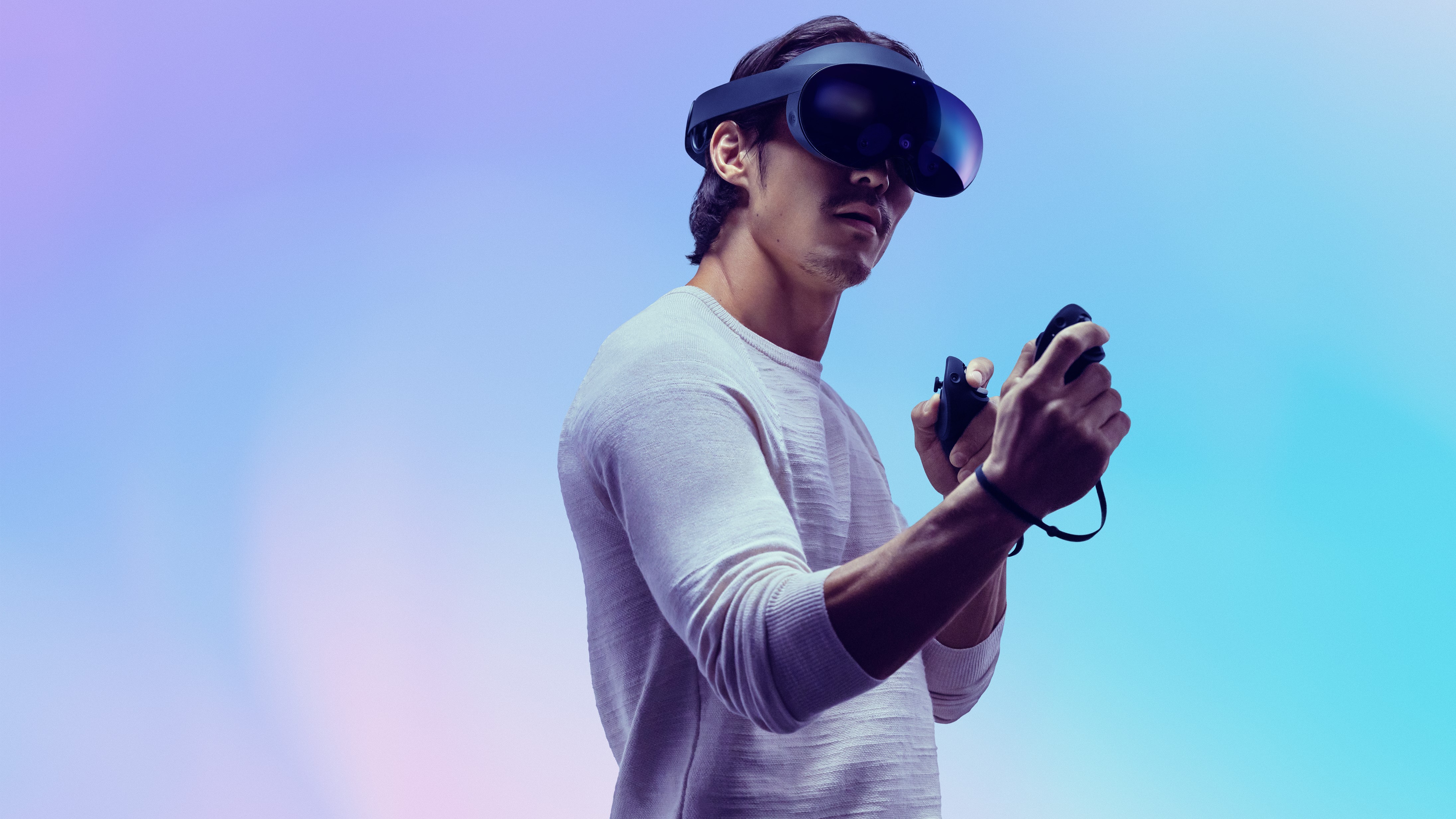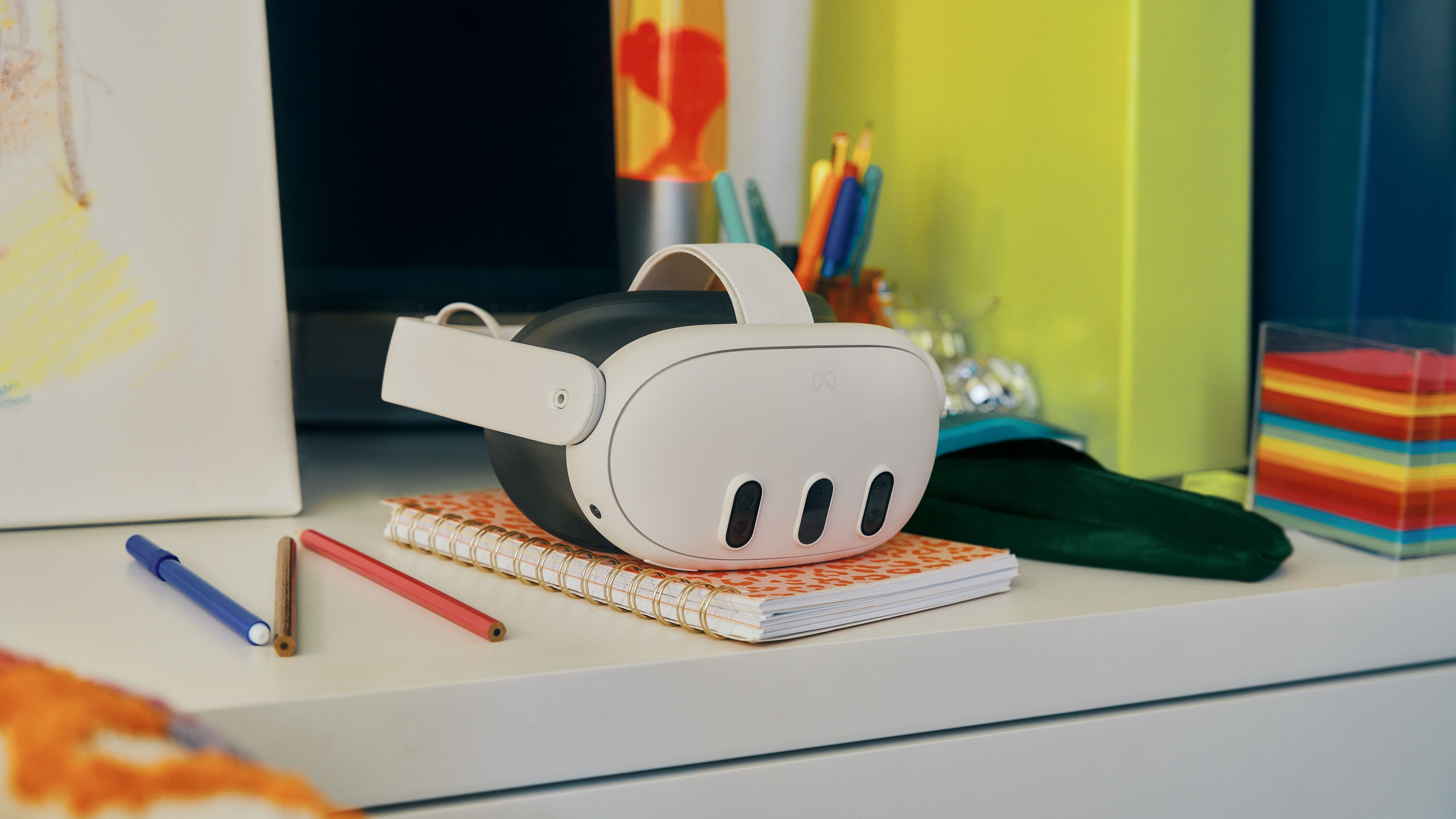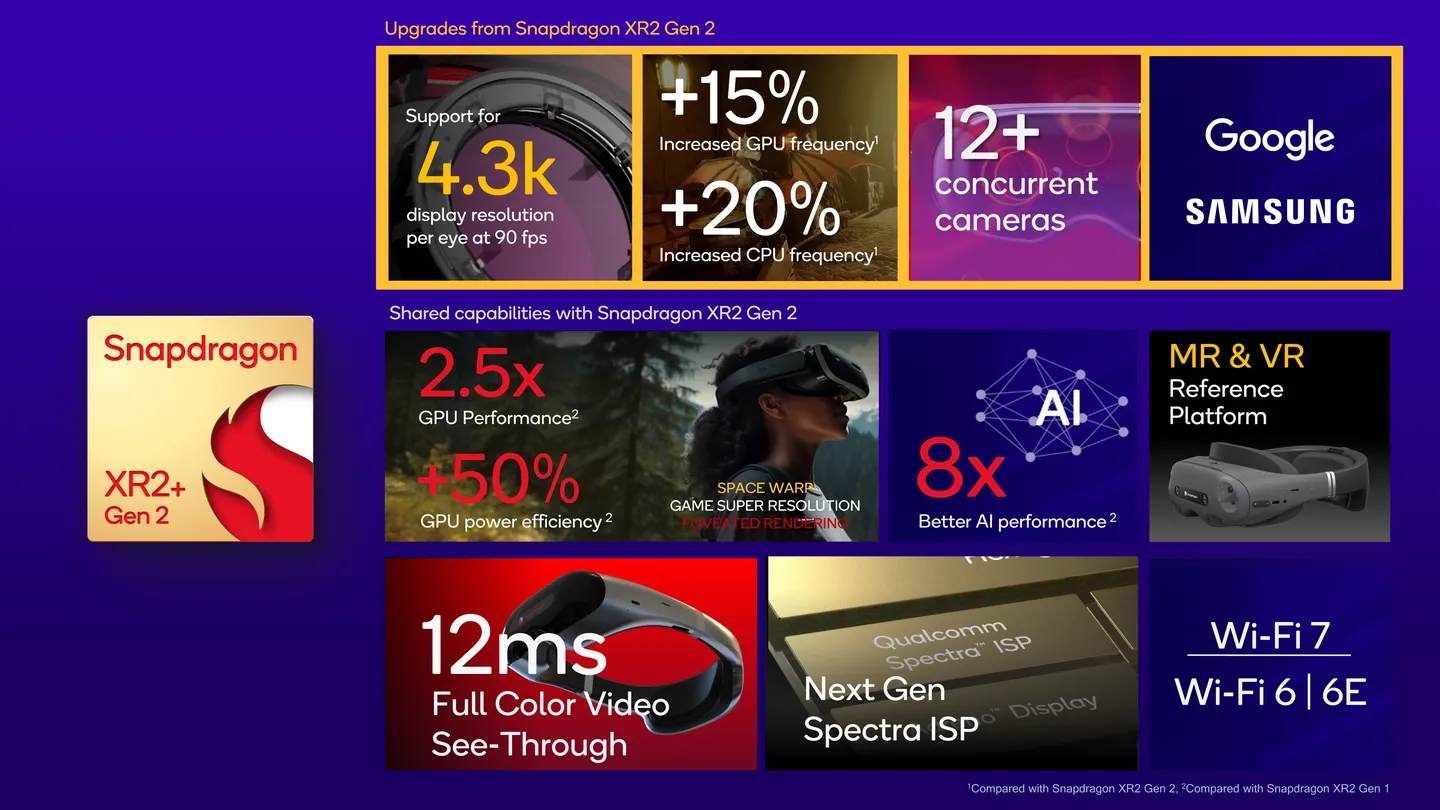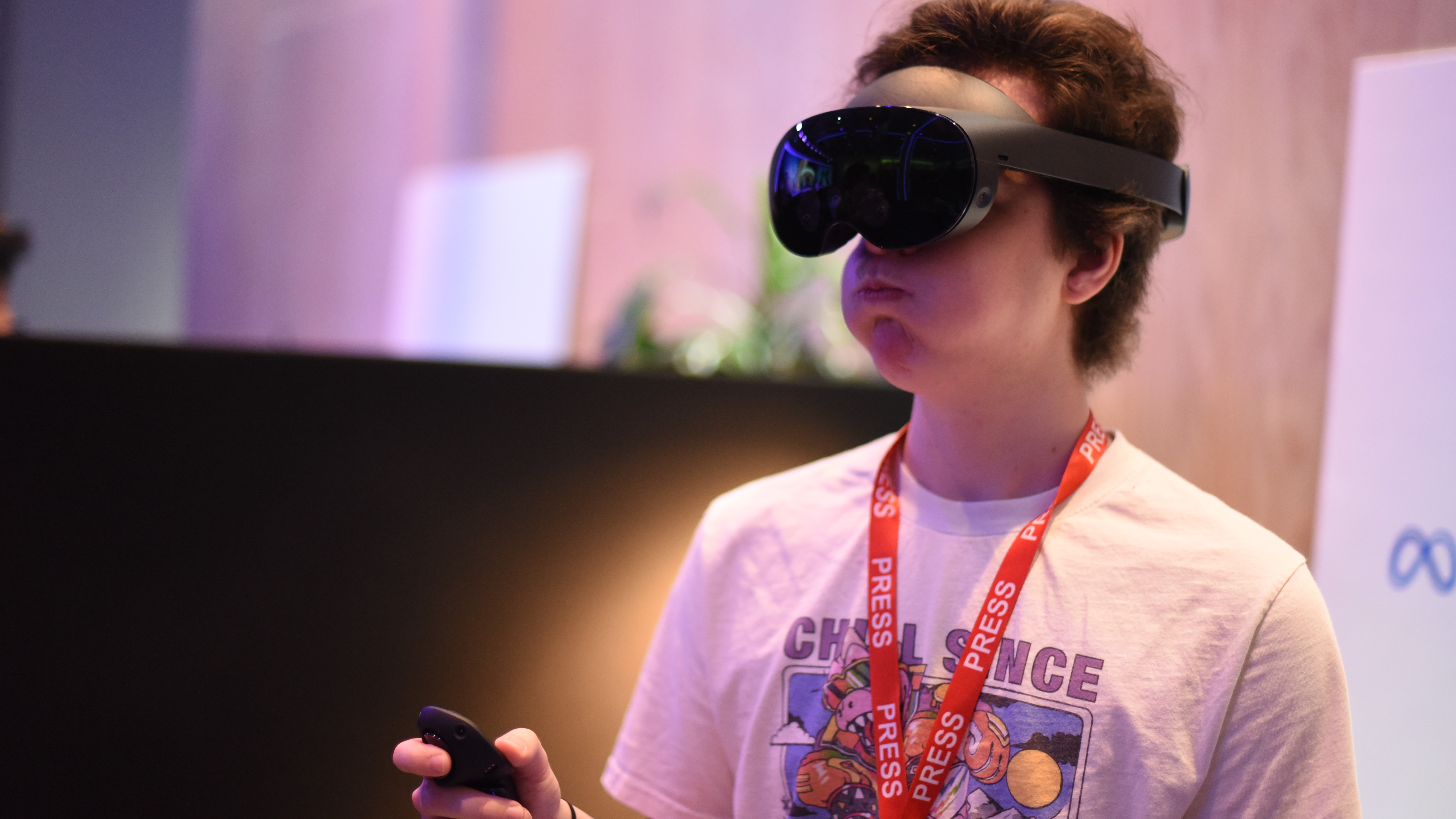[ad_1]
Meta’s Quest 3 may be less than a year old, but Meta appears to be working on a few follow-ups. Leaks and rumors point to the existence of a Meta Quest 3 Lite – a cheaper version of the Meta Quest 3 – and a Meta Quest Pro 2 – a follow-up to the high-end Meta Quest Pro.
The original Meta Quest Pro doesn’t seem to have been all that popular – evidenced by the fact its price was permanently cut by a third less than six months after its launch – but the Apple Vision Pro seems to have fueled a renaissance of high-end standalone VR hardware. This means we’re getting a Samsung XR headset (developed in partnership with Google), and mostly likely a Meta Quest Pro 2 of some kind.
While one leak suggested the Meta Quest Pro 2 had been delayed – after Meta cancelled a project that the leak suggested was set to be the next Quest Pro – there’s more than a little evidence that the device is on the way. Here’s all of the evidence, as well as everything you need to know about the Meta Quest Pro 2 – including some of our insight, and the features we’d most like to see it get.
Meta Quest Pro 2: Price
Because the Meta Quest Pro 2 hasn’t been announced we don’t know exactly how much it’ll cost, but we expect it’ll be at least as pricey as the original which launched at $1,499.99 / £1,499.99 / AU$2,449.99.

The Meta Quest Pro was permanently discounted to $999.99 / £999.99 / AU$1729.99 five months after it launched, but we expect this was Meta attempting to give the Quest Pro a much-needed sales boost rather than an indication of the headsets actual cost. So we expect this is much cheaper than Quest Pro 2 will be.
What’s more, given that the device is expected to be more of an Apple Vision Pro competitor — which costs $3,500 or around £2,800 / AU$5,350 – with powerful specs, LG-made OLED panels, and could boast next-gen mixed reality capabilities there’s a good chance it could cost more than its predecessor.
As such we’re expecting it to come in at nearer $2,000 / £2,000 / AU$3,000. Over time, and as more leaks about the hardware come out, we should start to get a better idea of its price – though as always we won’t know for certain how much it’ll cost until Meta says something officially.
Meta Quest Pro 2: Release date

Meta hasn’t announced the Quest Pro 2 yet – or even teased it. Given its usual release schedule this means the earliest we’re likely to see a Pro model is October 2025; that’s because it would tease the device at this year’s Meta Connect in September/October 2024, and then launch it the following year’s event as it did with the original Quest Pro and Quest 3.
But there are a few reasons we could see it launch sooner or later. On the later release date side of things we have the rumored Meta Quest 3 Lite – a cheaper version of the Meta Quest 3. Meta may want to push this affordable model out the gate sooner rather than later, meaning that it might need to take a release slot that could have been used by the Quest Pro 2.
Alternatively, Meta may want to push a high-end model out ASAP so as to not let the Apple Vision Pro and others like the Samsung XR headset corner the high-end VR market. If this is the case it could forgo its usual tease then release strategy and just release the headset later this year – or tease it at Connect 2024 then launch it in early 2025 rather than a year later in late 2025 as it usually would.
This speculation all assumes a Meta Quest Pro 2 is even on the way – though Meta has strongly suggested that another Pro model would come in the future; we’ll just have to wait and see what’s up its sleeve.
Meta Quest Pro 2: Specs
Based on LG and Meta’s announcement of their official partnership to bring OLED displays to Meta VR headsets in the future, it’s likely that the Meta Quest Pro 2 would feature OLED screens. While these kind of displays are typically pricey, the Quest Pro 2 is expected to be a high-end model (with a high price tag), and boasting OLED panels would put it on par with other high-end XR products like the Apple Vision Pro.

It also seems likely the Meta Quest Pro 2 will boast a Snapdragon XR2 Plus Gen 2 chipset – the successor to the Gen 1 used by the Quest Pro. If it launches further in the future than we expect it would instead boast a currently unannounced Gen 3 model.
While rumors haven’t teased any other specs, we also assume the device would feature full-color mixed reality like Meta’s Quest 3 and Quest Pro – though ideally the passthrough would be higher quality than either of these devices (or at least, better than the Quest Pro’s rather poor mixed reality).
Beyond this, we predict the device would have specs at least as good as its predecessor. By that we mean we expect the base Quest Pro 2 would come with 12GB of RAM, 256GB of storage and a two-hour minimum battery life.
Meta Quest Pro 2: What we want to see
We’ve already highlighted in depth what we want to see from the Meta Quest Pro 2 – namely it should ditch eye-tracking and replace it with four different features. But we’ll recap some of those points here, and make a few new ones of things we want to see from the Quest Pro 2.
Vastly better mixed-reality passthrough, more entertainment apps and, 4K OLED displays would go a long way to making the Meta Quest Pro 2 feel a lot more like a Vision Pro competitor – so we hope to see them on the Quest Pro 2.
Eye-tracking could also help, but Meta really needs to prove it’s worthwhile. So far every instance of the tech feels like an expensive tech demo for a feature that’s neat, but not all that useful.

Ignoring specs and design for a second, our most important hope is that the Quest Pro 2 isn’t as prohibitively expensive as the Apple Vision Pro. While the Vision Pro is great, $3,500 is too much even for a high-end VR headset when you consider the realities of how and how often the device will be used. Ideally the Quest Pro 2 would be at most $2,000 / £2,000 / AU$3,000, though until we know more about its specs we won’t know how realistic our request is.
Lastly we hope the device is light, perhaps with a removable battery pack like the one seen in the HTC Vive XR Elite. This would allow someone who wants to work at their desk or sit back and watch a film in VR wear a much lighter device for the extended period of time (provided their near a power source). Alternatively they can plug the battery in and enjoy a typical standalone VR experience – to us this would be a win-win.
[ad_2]
Source Article Link

